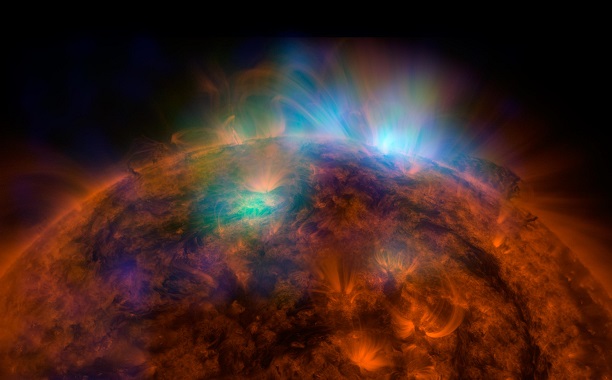The National Aeronautics and Space Administration’s Jet Propulsion Laboratory (JPL), which is managed by Caltech on behalf of NASA, has released the first images captured of our sun by NASA’s Nuclear Spectroscopic Telescope Array, also known as NuSTAR.
This marks the first time the far-gazing NuSTAR has been directed to capture images of our sun, as it was originally designed with the intent of gazing out into the depths of space to examine black holes and other objects far away from our solar system.
The resulting imagery is the most sensitive solar portrait taken in high-energy X-rays to date, according to NASA.
Fiona Harrison of the California Institute of Technology in Pasadena was quoted in a JPL news release as having said that the whole idea sounded “crazy” because the telescope array was “designed to peer deep into the universe,” not into our own backyard. But Harrison was eventually convinced by solar physicist David Smith, who is a member of the NuSTAR team at the University of California, Santa Cruz.
At first I thought the whole idea was crazy (…) Why would we have the most sensitive high energy X-ray telescope ever built, designed to peer deep into the universe, look at something in our own back yard?
While the image captured by NuSTAR certainly has its aesthetic appeal, it also marks an important confirmation: it can in fact be used to gather data about the sun.
In the image, the green and blue reveal solar high-energy emission with the blue indicating energies between three and five kiloelectronic volts and the green between two and three kiloelectron volts. The red channel is representative of ultraviolet light captured by SDO at wavelengths of 171 angstroms, indicating the presence of lower-temperature material in the solar atmosphere at 1 million degrees.
In other news, a panel of scientists at the American Museum of Natural History discussed a proposed high-definition space telescope which is to feature a 39 foot long multi-piece mirror capable of viewing the universe in ultraviolet, optical and infrared light. In comparison, the Hubble Space Telescope’s mirror is just 7.8 feet wide and the soon-to-be launched James Webb Space Telescope’s mirror measures in at 16.4 feet in width.
























